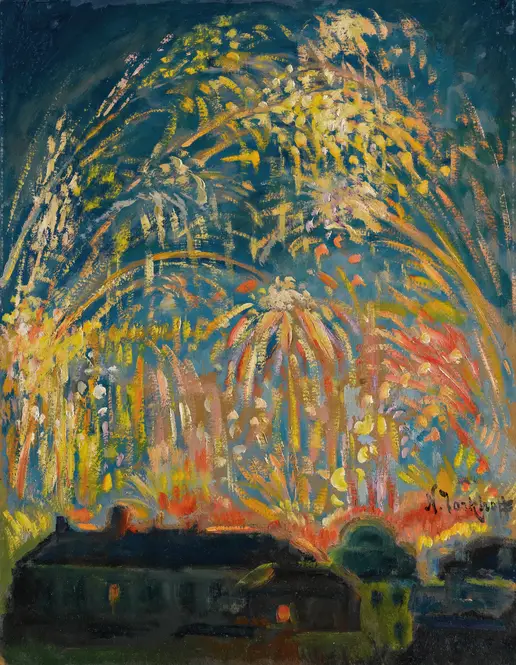Nikolai Alexandrovich Tarkhov
Nikolai Alexandrovich Tarkhov (1871–1930), Russian, A painter of quiet intensity, his work bridged the fin-de-siècle unease and the modernist stirrings of early 20th-century Europe. Though less celebrated than his contemporaries, Nikolai Alexandrovich Tarkhov carved a niche with his subdued yet evocative landscapes and intimate domestic scenes. His palette often leaned into muted earth tones, punctuated by unexpected flashes of warmth—a sunlit corner of a room, the glow of a samovar—hinting at a deeper emotional undercurrent beneath the surface stillness.
Tarkhov’s years in Paris, where he settled after leaving Russia, exposed him to Post-Impressionist influences, yet he resisted full assimilation into any movement. Instead, his paintings retained a distinctly Slavic melancholy, a quality that drew comparisons to Levitan’s lyrical landscapes but with a tighter, almost claustrophobic focus. His interiors, particularly, feel like paused moments: a child bent over a book, a woman sewing by a window, all rendered with a tactile attention to texture—wood grain, fabric folds, the play of lamplight.
Critics occasionally dismissed his work as "too modest," but this very restraint became his signature. In an era of grand manifestos, Tarkhov’s art whispered, inviting viewers to lean in closer. Late in life, he experimented with looser brushwork, though never abandoning his foundational reverence for quietude. Today, his pieces linger in regional museums and private collections, resonating most with those attuned to art’s quieter frequencies.
Tarkhov’s years in Paris, where he settled after leaving Russia, exposed him to Post-Impressionist influences, yet he resisted full assimilation into any movement. Instead, his paintings retained a distinctly Slavic melancholy, a quality that drew comparisons to Levitan’s lyrical landscapes but with a tighter, almost claustrophobic focus. His interiors, particularly, feel like paused moments: a child bent over a book, a woman sewing by a window, all rendered with a tactile attention to texture—wood grain, fabric folds, the play of lamplight.
Critics occasionally dismissed his work as "too modest," but this very restraint became his signature. In an era of grand manifestos, Tarkhov’s art whispered, inviting viewers to lean in closer. Late in life, he experimented with looser brushwork, though never abandoning his foundational reverence for quietude. Today, his pieces linger in regional museums and private collections, resonating most with those attuned to art’s quieter frequencies.
-

Fireworks In Nice
Nikolai Alexandrovich Tarkhov (Russian, 1871–1930)A vibrant explosion of color captures the magic of fireworks over water, blending chaos and harmony in a single breathtaking moment.
